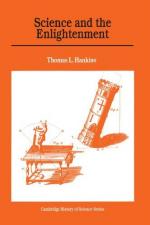
|
| Name: _________________________ | Period: ___________________ |
This test consists of 15 multiple choice questions and 5 short answer questions.
Multiple Choice Questions
1. What was the name of the philosopher who carried out the following experiments: kite, electric spider, and lightning bells to study electricity?
(a) Stephen Gray.
(b) Abbe Jean Antoine Nollet.
(c) Benjamin Franklin.
(d) The Jesuits.
2. Who claimed a community of atheists could live a completely moral existence, according to Chapter 1 of the book "Science and the Enlightenment"?
(a) L'Hopital.
(b) Pierre Bayle.
(c) Kant.
(d) Varignon.
3. In Chapter 3, who proposed a single static electrical "atmosphere" that attracted and repelled by pressure rather than by the impact of an electrical wind?
(a) Newton.
(b) Desagulier.
(c) Musschenbroek.
(d) Franklin.
4. Of all the subtle fluids conceived of during the Enlightenment, the ________ was the one that caused the most excitement and attracted the most researchers.
(a) Electrical fire.
(b) Water.
(c) Natural fire.
(d) Air.
5. Who came out in support of vis viva in 1722 and concluded that "what was before only a dispute of words now becomes a dispute about real things"?
(a) Voltaire.
(b) 'sGravesande.
(c) Galileo Galilei.
(d) Musschenbroek.
6. What was the name of the philosopher who had a passion for humanity, a desire to "do good," and a penchant for reform, according to Chapter 1?
(a) Descartes.
(b) Newton.
(c) Maupertuis.
(d) Condorcet.
7. The conversion of 'sGravesande confused the ideological debate because he was one of the leading supporters of ________ philosophy on the Continent.
(a) Newtonian.
(b) Platoian.
(c) Aristotlian.
(d) Voltairian.
8. What area of science included astronomy, optics, statics, hydraulics, gnomonics, geography, horology, navigation, surveying, and fortification?
(a) Geology.
(b) Botany.
(c) Mixed mathematics.
(d) Meteorology.
9. Who believed that the universe would run down if it were not for God's intervention to renew his creation?
(a) Newton.
(b) Johnson.
(c) Franklin.
(d) Eddison.
10. According to the beginning of Chapter 1, in 1759 the French mathematician ________ described a revolution that he saw taking place in natural philosophy.
(a) Newton.
(b) Euler.
(c) Carnot.
(d) Jean Lerond d'Alembert.
11. In a letter of September 21, 1781, who wrote to his mentor Jean d'Alembert that he feared mathematics had reached its limit?
(a) Diderot.
(b) Sylvestre-Francois Lacroix.
(c) Bernard Fontenelle.
(d) Joseph-Louis Lagrange.
12. In Chapter 2, what was the name of the shape of a chain suspended between two fixed points?
(a) Catenary.
(b) Isoperimeters.
(c) Involute.
(d) Tractrix.
13. The concept of a ________ was a necessary step in the process of quantification, according to the narrator in Chapter 3.
(a) Subtle fluid.
(b) Acid fluid.
(c) Capacitor fluid.
(d) Transmission fluid.
14. Madame du Chatelet supported the Leibnizian theory of ________ because it gave a better account of free will.
(a) Religion.
(b) Mechanics.
(c) Christianity.
(d) Physics.
15. What was the name of the path by which an object slides from one point to another that is not on the same vertical line in the shortest possible time?
(a) Tractrix.
(b) Brachistachrone.
(c) Involute.
(d) Catenary.
Short Answer Questions
1. ________'s emphasis on the repulsive or expansive property of air, led naturally to an emphasis on the expansive properties of the even more subtle fluids of heat and electricity.
2. Chapter 2 states that ________ had been created to deal with the problem of motion and that the new mathematical techniques discovered in the eighteenth century were all responses to the challenges of mechanics.
3. The concept of subtle fluids made its appearance around ________ when demonstration experiments in physics were rapidly gaining in popularity, according to the narrator in Chapter 3.
4. According to Chapter 1, ________, in 1747, attributed the cause of a "great revolution in physics" to Newton's "Principia."
5. The discipline of physics had originally been created by ________, and it had nothing to do with experiment or quantitative measure nor was it limited to the inorganic world.
|
This section contains 552 words (approx. 2 pages at 300 words per page) |

|




